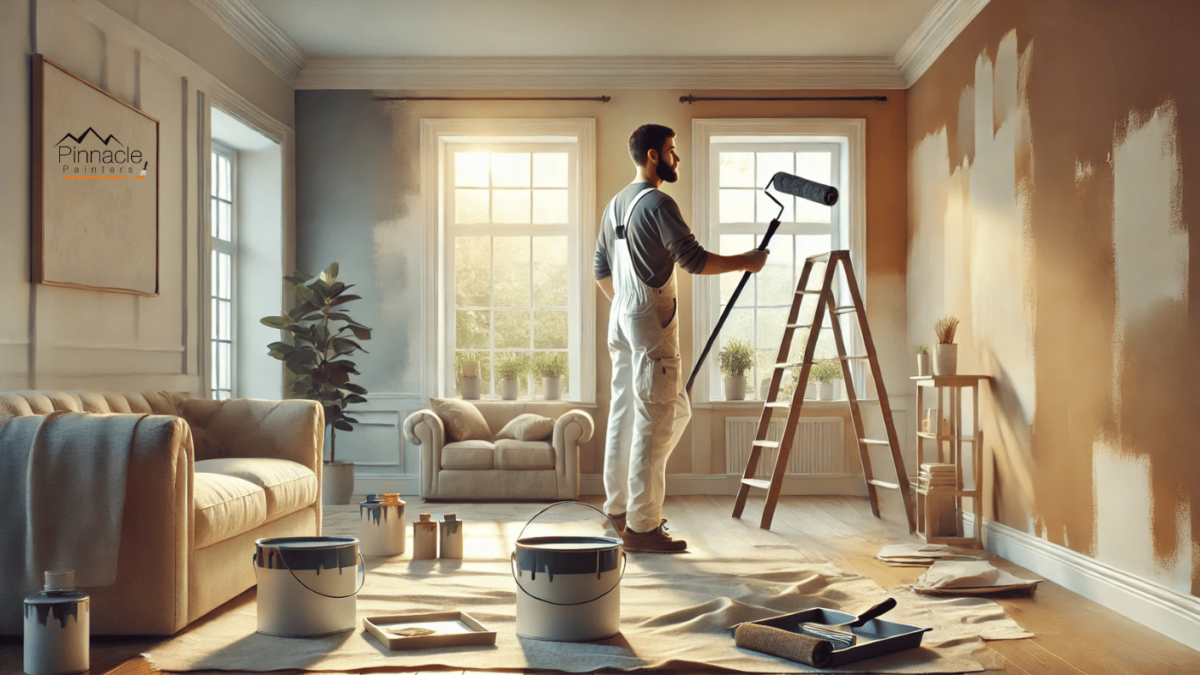How Long Does Interior Paint Take to Dry and Cure? A Complete Guide

Understanding the drying and curing times of interior paint is key to achieving a smooth, professional finish. Rushing these stages can lead to issues such as bubbling, uneven application, or surface imperfections. Here, we’ll break down the different drying stages of interior paint, factors affecting drying and curing, and tips to help accelerate the process.
Drying Stages of Interior Paint
Paint drying happens in three main phases: dry to the touch, ready for a second coat, and fully cured.
1. Dry to the Touch
This stage refers to when the surface of the paint is dry enough to touch lightly without leaving fingerprints or smudges.
- Latex Paint: Typically, latex paint is dry to the touch within about one hour. Latex is water-based, allowing it to evaporate and dry faster.
- Oil-Based Paint: Oil-based paints take considerably longer, usually 6 to 8 hours to dry to the touch. This type of paint relies on slower evaporation and oxidation processes, which extend drying time.
2. Ready for a Second Coat
Applying a second coat too soon can lead to imperfections, so it’s essential to wait until the paint is ready.
- Latex Paints: Generally, a second coat can be applied after about four hours. Waiting this time allows the initial layer to set, preventing bubbling or lifting of the paint.
- Oil-Based Paints: These require about 24 hours before a second coat can be applied. Waiting a full day ensures the paint has fully dried and won’t be disturbed by a second application.
3. Fully Cured
Curing is the final stage, where the paint hardens to its maximum durability. During this time, avoid placing items against the painted surface or cleaning it, as the paint remains vulnerable to scuffs and scratches.
- Latex Paint: Full curing for latex paint typically takes 2 to 4 weeks.
- Oil-Based Paint: Oil-based paints cure faster, usually reaching full hardness in about 7 days.
Factors Affecting Drying and Curing Times
Several factors can influence the time it takes for paint to dry and fully cure.
1. Humidity and Temperature
- High Humidity: High moisture levels in the air slow down the drying process because water-based paints take longer to evaporate in damp conditions.
- Ideal Conditions: For optimal drying, aim for moderate humidity and a temperature around 70°F (21°C). Ventilation is also essential for promoting airflow and aiding faster drying.
2. Application Thickness
Applying too much paint in a single layer results in longer drying times, as thick layers trap moisture and take longer to harden. Using thin layers ensures a quicker dry time and reduces the risk of drips or uneven coverage.
3. Type of Paint
The type of paint directly affects drying and curing times:
- Latex Paints: Known for their rapid drying and shorter curing periods.
- Oil-Based Paints: These take longer due to their solvent-based formula but offer greater durability.
Practical Tips for Faster Drying
Here are some practical methods to help speed up the drying time of your paint:
- Increase Air Circulation: Fans and air conditioning can improve airflow, which helps paint dry more quickly.
- Control Humidity: Avoid painting on humid days, and consider using a dehumidifier to reduce moisture levels in the air.
- Use Thin Coats: Thin, even coats will dry faster and offer a smoother finish.
Conclusion
When painting interiors, understanding the drying and curing times of different paint types is crucial for a durable and attractive finish. While latex paints dry and cure faster, oil-based paints offer a tougher finish that requires more patience. By following these guidelines, factoring in environmental conditions, and applying the paint in thin layers, you can achieve professional results that last.
For a well-prepared painting project, remember to plan around drying and curing times. With the right conditions, techniques, and patience, you’ll enjoy a beautiful, long-lasting paint job.
Frequently Asked Questions
How can I tell if paint is fully cured?
Fully cured paint will no longer feel tacky, even if pressure is applied. It will be resistant to scratches, scuffs, and other surface damage.
What happens if I apply a second coat too soon?
Applying a second coat before the first coat has dried can lead to bubbling, streaking, or peeling, resulting in an uneven finish.
How can I speed up the drying time of oil-based paint?
To speed up oil-based paint drying, use thinner coats and increase ventilation in the room. However, because oil-based paints dry by oxidation, drying times can’t be accelerated as effectively as with latex paints.
Is it okay to paint in high humidity?
Painting in high humidity can result in longer drying times and potential finish problems. If possible, wait for a dry day or reduce humidity with a dehumidifier.






